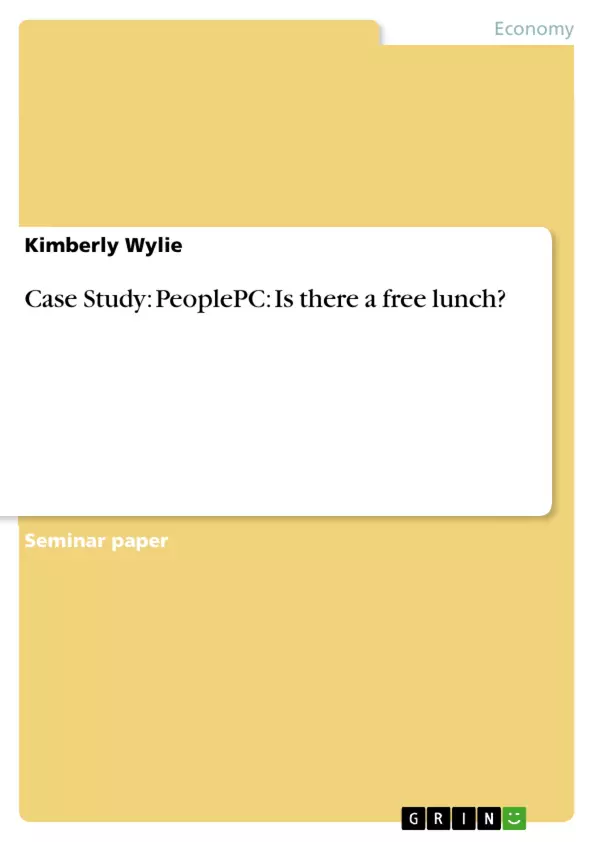PeoplePC’s and Free-PC’s marketing objectives include garnering as many customers as they can for their product and service package offerings.
Table of Contents
- What marketing objectives are PeoplePC and Free-PC pursuing?...
- What pricing approach(es)are these companies using to reach their marketing objectives?
- Briefly describe the fixed and variable costs for a company like PeoplePC.
- What are the implications of this cost structure?
- How can companies like PeoplePC make offers that appear to be free, or almost free?
- What are the true costs to the consumer?
- Use the five product characteristics that influence the rate of adoption to assess the People PC product offering.
- What are the core, actual, and augmented products being sold by People PC? Clearly differentiate between the three.
- Identify and describe the type of consumer product PeoplePC offers..
- Describe three types of companies PeoplePC is competing against.
- Do you think PeoplePC is well positioned for success?.
- What marketing recommendations would you make to People PC?......
Objectives and Key Themes
This case study examines the marketing strategies employed by PeoplePC and Free-PC, exploring their pricing approaches, cost structures, and product offerings. It aims to analyze how these companies achieve seemingly "free" or low-cost offerings and assess the true costs to consumers.
- Marketing objectives and strategies of PeoplePC and Free-PC.
- Pricing approaches and their implications for achieving marketing goals.
- Fixed and variable costs in a company like PeoplePC.
- Product characteristics influencing adoption rates.
- Competition faced by PeoplePC.
Chapter Summaries
- The case study begins by examining the marketing objectives of PeoplePC and Free-PC, highlighting their focus on customer acquisition through low-cost strategies.
- Chapter 2 delves into the pricing approaches used by these companies, emphasizing their reliance on low-cost leadership strategies, particularly Free-PC's "free" PC offering.
- The third chapter explores the fixed and variable costs associated with PeoplePC, highlighting the significant impact of membership fluctuations on their profitability.
- Chapter 4 analyzes the five product characteristics that influence adoption rates, examining PeoplePC's product offering in terms of relative advantage, compatibility, complexity, divisibility, and communicability.
- Chapter 5 distinguishes between the core, actual, and augmented products offered by PeoplePC, identifying the consumer product type and outlining the company's competitive landscape.
Keywords
This case study focuses on marketing objectives, pricing strategies, cost structures, product characteristics, and competitive analysis in the context of PeoplePC's business model. Key terms include low-cost leadership, fixed and variable costs, relative advantage, compatibility, divisibility, and consumer product offerings.
- Quote paper
- Kimberly Wylie (Author), 2004, Case Study: PeoplePC: Is there a free lunch? , Munich, GRIN Verlag, https://www.grin.com/document/57826



